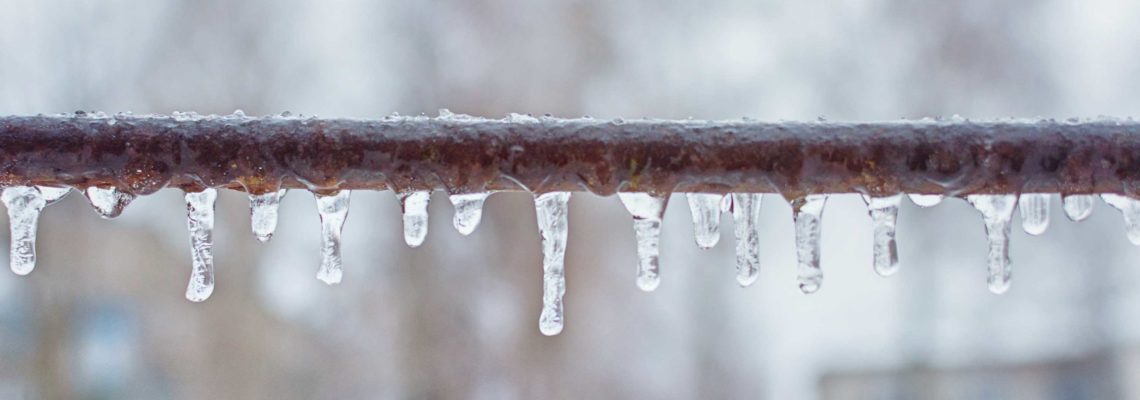When the weather outside dips below freezing, you need to start thinking about how to avoid frozen pipes. Every winter, water damage restoration companies get calls to help homeowners who have had a frozen pipe burst and flood their home. Learn more about how to prevent frozen water pipes and what to do if it does happen.
Why Water Pipes Freeze
Pipes freeze when they’re exposed to severe cold weather. Pipes that are outdoors or in unheated areas are susceptible to freezing, as are any pipes that run through exterior walls and that aren’t properly insulated.
The way the home is built, how well the insulation works, how the wind is blowing, and other conditions can cause pipes to freeze. As little as a day of below-freezing temperatures is enough to cause water to freeze in the pipes.
As water freezes, it does expand. It will expand in the easiest direction. If the pipes have water in them, it will expand outward, pushing on the walls of the pipes and eventually breaking them.
The biggest danger is that the cracks in these water pipes can be hidden behind walls and the problems won’t be revealed until the pipes thaw and start leaking and create serious water damage.
Preventing Frozen Water Pipes
Preparing water lines that won’t be used over the winter by draining them can help prevent frozen pipes. Any outdoor water lines should be drained completely. Hoses should be disconnected and stored inside.
For pipes inside the home, add insulation to help protect them from freezing. Keep the heat on in the house and set it to at least 55 degrees, even if no one will be home.
Letting water drip from a faucet can help as well since moving water won’t freeze as easily. It’s also possible to open cabinet doors so the warm air in the home can circulate around the plumbing, helping keep it from freezing.
Dealing with Frozen Water Pipes
Sometimes, even when precautions are taken, a pipe will still end up freezing. Turning on the faucets in the home can help homeowners determine which pipe is frozen, as water will not come out of that faucet.
Once the frozen pipe is found, turn on the faucet for the hot and cold water. Start thawing closer to the faucet, working down to the part of the pipe that’s frozen. Use a hair dryer or wrap hot towels around the frozen pipe to help unfreeze the water.
Be sure to avoid any open flames. If the pipe is behind a wall, try turning up the heat in the home or using an infrared lamp by the wall.
Be Aware of The Risks
Always use caution when thawing a frozen pipe. Electrical equipment should be kept away from the pipe in case it starts to drip. Start by the faucet to avoid a blockage that could cause the pipe to burst. Avoid using open flames, as this can be dangerous. Turn off the water to the pipes after they have thawed and keep an eye out for any leaks.
If a pipe does freeze and bursts on its own or while you’re thawing it, turn off the water source immediately and contact a plumber to have the pipes repaired. If you experience water damage from frozen pipes, call the professionals at PuroClean Certified Restoration to make sure your water damage restoration is done right the first time.


